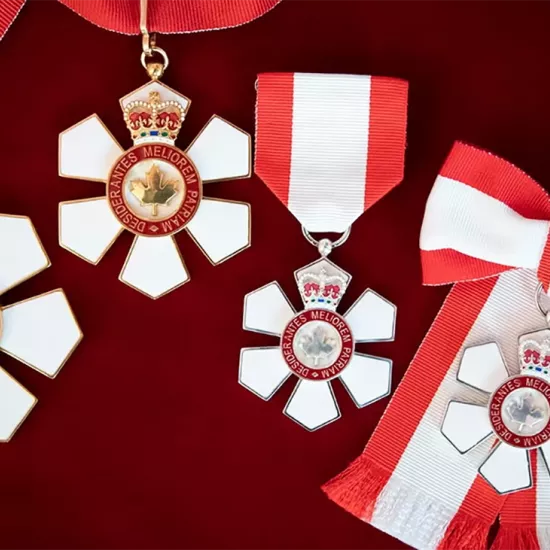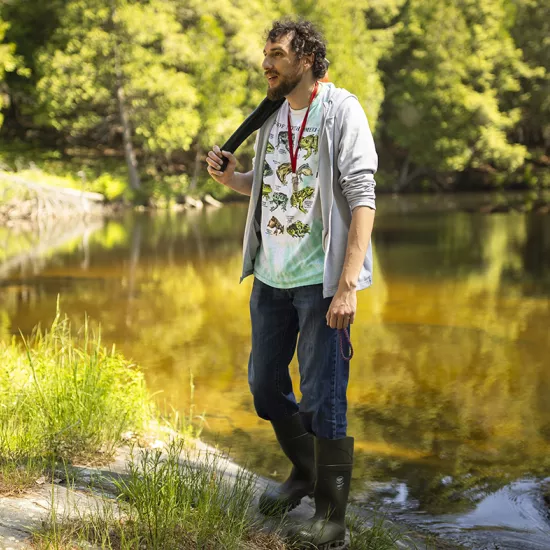Research, renderings and rainforest

On the west coast of British Columbia, the vast and ancient Great Bear Rainforest meets the cold-water seas that teem with seabirds, sea lions and humpback whales. Wild rivers, rich with salmon, weave from the sea through the rainforest floor and bring life to thousands of plant and animal species including the grizzlies, black bears and rare white Spirit bears that the region is named for.
Kate Campbell, a 2012 graduate of U of T’s Biomedical Communications Program at U of T Mississauga, created visuals and interactive media for WWF-Canada to tell the story of the Great Bear Region in British Columbia through The Great Bear Interactive ‘Canada's Great Bear: One Place Three Stories'.
"Results from my master's research project showed that visuals and interactivity improve learning outcomes," said Campbell. This project challenged Campbell to attract visitors to the site and to keep them there. "We used interactivity not only to improve learning outcomes but also to engage the visitors to explore the content," said Campbell.
The Great Bear Interactive educates visitors about Canada's Great Bear ecosystem and engages them in exploring the links between the old growth forest on land; the wild rivers where the salmon swim, spawn and die; and the sea. It explains why each component needs to be protected to maintain a complex cycle of life.
Campbell collaborated with WWF-Canada freshwater conservationist, James Casey, and communications specialist Jo Anne Walton on the project.
"There's only so much you can convey using scientific literature about what it means to sit on a boat next to a whale and watch it feed," said Casey. “One Place, Three Stories offers anyone around the world the opportunity to interact with and experience the Great Bear Region.”
Campbell drafted preliminary sketches, designed the navigation, created the user interface design and the final illustrations. Campbell wrote the scripting—the interaction—the javascript, HTML and CSS. WWF-Canada provided the scientific writing, a summary of the work that WWF-Canada, and researchers they supported, have been doing there for the last 10 years, said Casey.
Campbell presented the ecosystems as three panels in a broad landscape to show each ecosystem's place in the landscape. She composed the visuals of the three ecosystems—land, river and sea—with overlapping elements to show the connections between them. She placed icons into each section’s image. Viewers actively and physically engage by clicking the icons. The icons reveal detailed visuals and text, video, and one icon on the Sea image even reveals audio of the "barks and grunts of the Stellar sea lion".
Before enrolling in the professional master’s program in Biomedical Communications, Campbell, who also holds a B.Sc. in Ecology and Evolutionary Biology from the University of Toronto, worked as a field biologist in British Columbia.
WWF-Canada hopes to increase awareness of these intertwined ecosystems through the Great Bear Interactive. "We would like people to become more aware of the risks posed to the Great Bear," said Casey. "More though, I think, we wanted people to learn about how complex and rich the area was."
Now, Campbell is busy working on projects for the Canadian Diabetes Association and the Association of Ontario Midwives, and she teaches vector graphics once a week at the British Columbia Institute of Technology.
With her interests in nature and the environment, in education and environmental awareness, and human/nature interactions, Campbell feels the Great Bear Interactive was an amazing fit. "I feel quite fortunate to have that be one of my first projects out of the Biomedical Communications Program."



